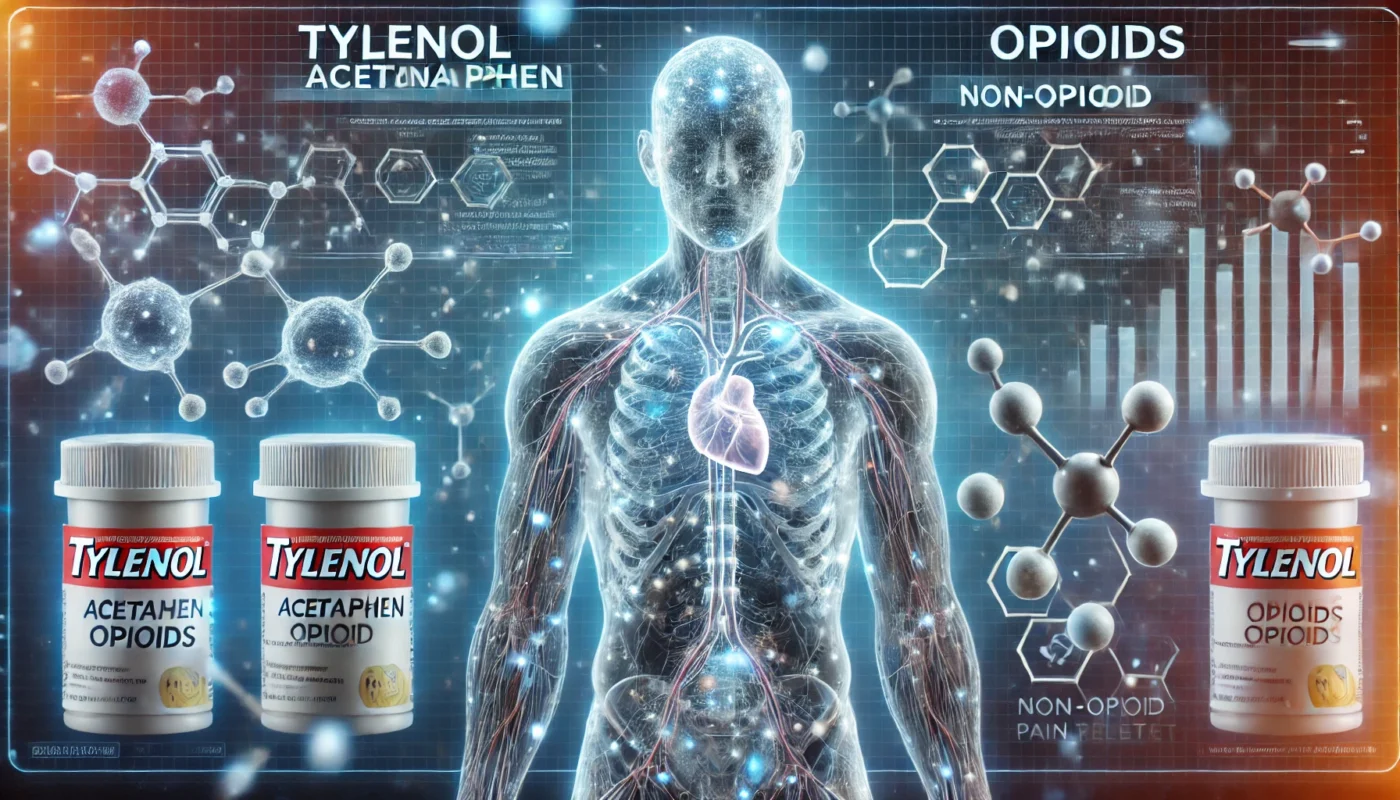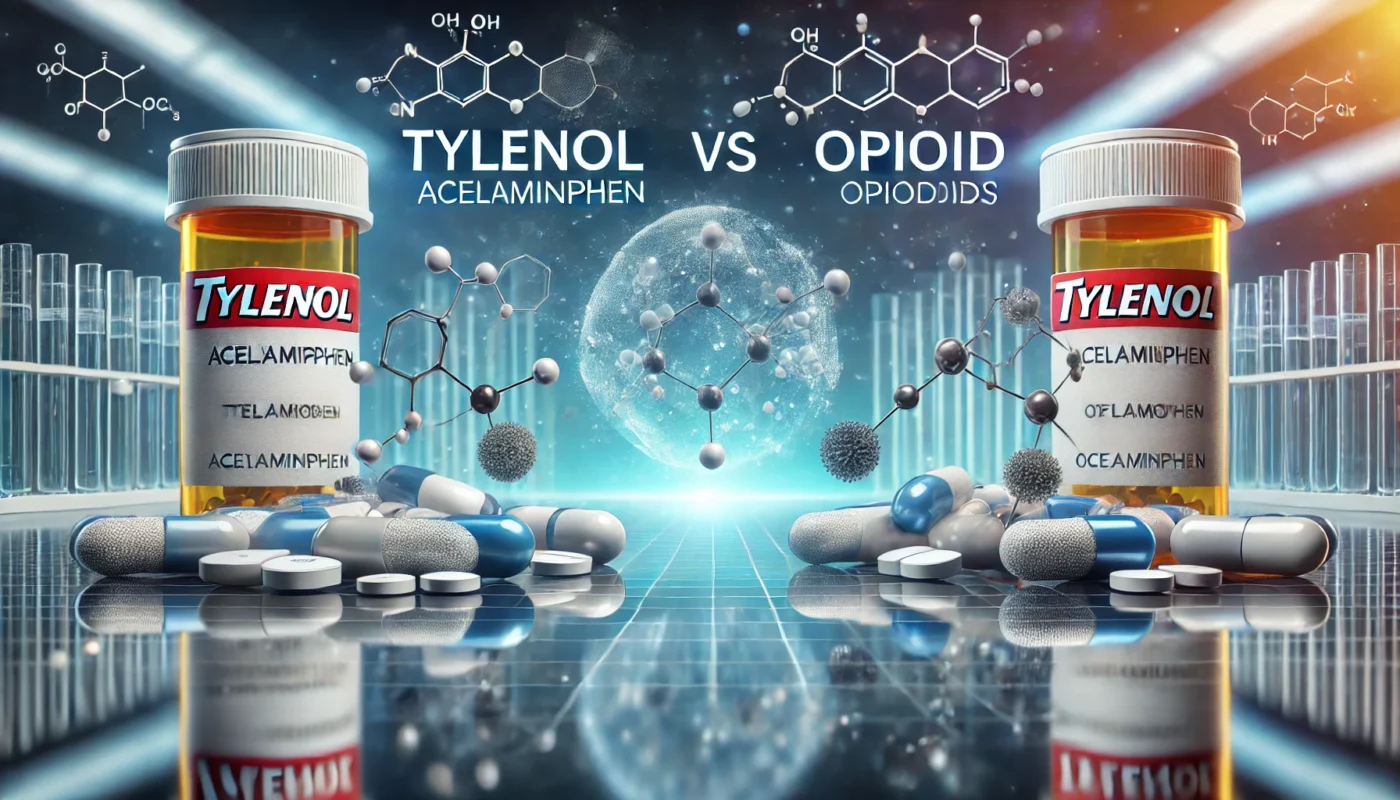Tylenol, known generically as acetaminophen, is one of the most commonly used medications for pain relief and fever reduction. It is available in multiple forms, including tablets, capsules, and liquid suspensions, catering to diverse age groups and personal preferences. Acetaminophen is classified as an analgesic (pain reliever) and an antipyretic (fever reducer).
You may also like: Understanding Long-Term Pain Relief Options
History and Development
Acetaminophen was first discovered in the late 19th century, but it wasn’t until the 1950s that Tylenol was introduced as a commercial product. Its development stemmed from the need for a pain reliever that was not aspirin, offering an alternative for those who could not tolerate aspirin’s side effects. Over the decades, Tylenol has become a trusted brand, known for its efficacy and accessibility.
Varieties and Uses
Tylenol comes in various formulations to meet different needs. Children’s Tylenol is available in liquid form, making it easier for young children to take. For adults, extra-strength versions offer more potent pain relief. There are also specialty formulations, such as Tylenol PM, which includes a sleep aid for nighttime use. Each variation is designed to address specific symptoms, from simple headaches to complex multi-symptom conditions like flu.
Safety Profile
Acetaminophen is generally considered safe when used as directed. Unlike NSAIDs, it does not cause stomach irritation or bleeding, making it suitable for individuals with sensitive stomachs. However, caution is necessary to avoid excessive dosages, as high intake can lead to liver damage. Understanding the correct dosage and being aware of acetaminophen in combination medications is crucial to preventing accidental overdose.
Mechanism of Action
Acetaminophen alleviates pain and reduces fever through a well-defined mechanism of action. It works by inhibiting the production of prostaglandins in the brain. Prostaglandins are chemicals that promote inflammation, pain, and fever. By curbing their production, acetaminophen helps alleviate these symptoms.
Prostaglandin Inhibition
Prostaglandins play a key role in the body’s inflammatory response. They are produced by cyclooxygenase (COX) enzymes during tissue damage or infection. Acetaminophen is thought to act centrally in the brain to inhibit the COX enzymes, thus reducing the synthesis of prostaglandins. This results in decreased perception of pain and lowered body temperature in cases of fever.
Comparison with NSAIDs
Though acetaminophen and NSAIDs like ibuprofen both relieve pain, they do so through different mechanisms. NSAIDs inhibit COX enzymes throughout the body, reducing inflammation at the site of injury. Acetaminophen, however, lacks significant anti-inflammatory properties, making it less effective for conditions where inflammation is the primary issue. This distinction is important when choosing a pain reliever for specific conditions.
Central Nervous System Effects
Acetaminophen’s action is largely confined to the central nervous system, which explains its effectiveness in reducing fever and alleviating headaches. The central nervous system-focused mechanism means it has a different side effect profile compared to peripheral-acting NSAIDs. By targeting the brain, acetaminophen can manage symptoms without affecting peripheral sites of inflammation.
Is Tylenol an Opioid?
The straightforward answer is: no, Tylenol is not an opioid. Understanding the classification and effects of opioids can help clarify this point.
Defining Opioids
Opioids are a class of drugs that include both prescription pain relievers, such as oxycodone and morphine, and illicit drugs like heroin. They work by binding to specific receptors in the brain, spinal cord, and other areas of the body, reducing the perception of pain. Opioids are known for their potential for addiction and dependence, contributing significantly to the ongoing opioid crisis.
Opioids vs. Non-Opioids
The distinction between opioids and non-opioids like Tylenol is crucial. Opioids engage with the brain’s reward system, which can lead to psychological dependence. In contrast, acetaminophen does not activate these pathways, thereby lacking the euphoric effects associated with opioids. This fundamental difference highlights why Tylenol is considered a safer alternative for those wary of opioid use.
Tylenol’s Role in Pain Management
While Tylenol is effective for mild to moderate pain, it does not have the potency required for severe pain management, a domain where opioids often play a role. Tylenol’s safety profile makes it ideal for everyday aches and pains, while opioids are typically reserved for more intense pain under strict medical supervision. This delineation underscores Tylenol’s non-opioid status in the broader pain management landscape.
Is Tylenol a Narcotic?
No, Tylenol is not a narcotic. The term “narcotic” is often used interchangeably with opioids, though technically, it refers to any drug that dulls the senses and relieves pain. Tylenol’s mechanism of action is entirely different from that of narcotics, and it does not carry the same risk of addiction or dependence.
Narcotics Explained
Historically, the term “narcotic” encompassed a wide range of substances that induced sleep or stupor. Today, it is more commonly associated with opioids and their sedative effects. Narcotics typically act on the central nervous system to alter the perception of pain, often leading to sedation or euphoria. Tylenol, however, does not produce these effects, reinforcing its non-narcotic classification.

Legal and Medical Definitions
In legal terms, narcotics often refer to controlled substances that are subject to regulation due to their potential for abuse. Medical professionals may use the term to describe drugs that have both analgesic and sedative properties. Tylenol does not fall under these definitions, as it neither sedates nor has abuse potential, aligning it more closely with over-the-counter medications than controlled narcotics.
Public Perception and Misunderstandings
Despite its clear classification, public misunderstandings about Tylenol occasionally arise, particularly in discussions about pain management. Some may mistakenly assume Tylenol’s efficacy means it shares properties with stronger, prescription-only medications. Educating the public on Tylenol’s distinct mechanism and purpose can help dispel myths and promote informed usage.
Is Tylenol 3 an Opioid?
Tylenol 3, however, is a different story. It is a prescription medication that combines acetaminophen with codeine, an opioid. Codeine is used to treat mild to moderately severe pain and works by changing the way the brain and nervous system respond to pain. Therefore, while regular Tylenol is not an opioid, Tylenol 3 does contain an opioid component.
Composition and Usage
Tylenol 3’s formulation includes both acetaminophen and codeine, providing a dual-action approach to pain relief. The acetaminophen component continues to serve as a pain reliever and fever reducer, while codeine offers additional pain relief by acting on the central nervous system. This combination is often prescribed for pain conditions that require more than acetaminophen alone but do not necessitate stronger opioids.
Codeine’s Opioid Characteristics
As an opioid, codeine is effective in altering pain perception by binding to mu-opioid receptors in the brain. This action not only reduces pain but can also induce mild euphoria, contributing to its potential for misuse. However, when used as directed in Tylenol 3, the risk of addiction is minimized, although caution and adherence to medical guidance are essential.
Prescription Guidelines and Considerations
Due to the presence of codeine, Tylenol 3 is available only by prescription, underscoring the need for careful patient evaluation and monitoring. Physicians assess the patient’s medical history, potential for abuse, and specific pain management needs before prescribing. Patients are advised to follow dosage instructions precisely to avoid adverse effects, including the risk of opioid dependence.
Is Acetaminophen an Opiate?
The term “opiate” specifically refers to natural substances derived from the opium poppy plant, such as morphine and codeine. Acetaminophen is not an opiate, as it is a completely synthetic compound and operates through a different mechanism.
Distinguishing Opiates from Opioids
Opiates are naturally occurring alkaloids found in the resin of the opium poppy. They include drugs like morphine and codeine, known for their pain-relieving properties. Opioids, on the other hand, encompass both natural opiates and synthetic or semi-synthetic substances that mimic opiate effects. Acetaminophen does not belong to either category, as it lacks the structural and functional characteristics of opiates and opioids.
Synthetic Nature of Acetaminophen
Acetaminophen is synthesized through a chemical process, setting it apart from naturally derived opiates. Its analgesic effects are achieved without the opioid-related side effects of sedation and respiratory depression. This distinction underscores acetaminophen’s role as a safer, non-opiate option for pain relief.
Clinical Implications
In clinical settings, understanding the differences between opiates, opioids, and non-opioids like acetaminophen is crucial for effective pain management. Physicians tailor treatment plans based on the pain’s origin, intensity, and the patient’s medical history. Acetaminophen’s non-opiate nature makes it a first-line treatment for many mild to moderate pain conditions, minimizing the potential for dependency.
Opioid Alternatives
Given the risks associated with opioids, many individuals seek alternative pain management options. Here are some non-opioid alternatives that can be effective:
Non-Opioid Analgesics
Non-opioid analgesics offer a range of options for those seeking pain relief without the risks associated with opioids.
- NSAIDs: These include ibuprofen (Advil) and naproxen (Aleve), which reduce inflammation and are effective for conditions like arthritis and muscle sprains. NSAIDs work by blocking COX enzymes throughout the body, reducing inflammation and pain at the source. They are often used for inflammatory conditions where acetaminophen may not suffice.
- Topical Analgesics: Creams and patches containing ingredients like menthol or capsaicin can provide localized pain relief. These products are particularly useful for joint pain or muscle soreness, offering targeted relief without systemic side effects. The application directly to the skin allows for high concentrations of active ingredients at the pain site.
- Acetaminophen Alternatives: Beyond Tylenol, acetaminophen is available in various formulations and brands, providing flexibility in dosage and administration. This versatility makes it suitable for diverse patient needs, from infants to adults. Understanding these options can help individuals choose the most appropriate form for their symptoms.
Physical Therapies
Physical therapies play a significant role in managing pain, often reducing the need for medication.
- Physical Therapy: Tailored exercises can help strengthen muscles and improve mobility, reducing the need for pain medications. Physical therapists develop individualized programs targeting specific areas of weakness or injury. Consistent therapy not only alleviates pain but also enhances overall function and quality of life.
- Acupuncture: This traditional Chinese medicine practice may help relieve pain by stimulating specific points on the body. Acupuncture is believed to promote the body’s natural healing processes, offering relief for conditions such as chronic back pain and migraines. It is considered a complementary therapy that can be integrated with other pain management strategies.
- Chiropractic Care: Chiropractic adjustments aim to improve alignment and function of the spine and other joints. By restoring proper alignment, chiropractic care can relieve pain and improve mobility, particularly for back and neck issues. This hands-on approach is non-invasive and drug-free, appealing to those seeking alternative therapies.
Mind-Body Techniques
Mind-body techniques focus on the psychological and emotional aspects of pain, providing holistic approaches to management.

- Meditation and Mindfulness: These practices can help individuals manage pain by altering their perception of it. Meditation encourages relaxation and stress reduction, which can lower pain intensity and improve coping. Mindfulness fosters present-moment awareness, reducing the emotional impact of pain.
- Cognitive Behavioral Therapy (CBT): CBT can aid in changing pain-related thoughts and behaviors, improving quality of life. This therapeutic approach helps patients identify negative thought patterns and develop healthier coping strategies. Through CBT, individuals learn to manage pain more effectively, enhancing their mental and physical well-being.
- Biofeedback: Biofeedback teaches patients to control physiological functions such as heart rate and muscle tension. By gaining awareness of these bodily processes, individuals can reduce stress and alleviate pain. Biofeedback is particularly useful for tension headaches and stress-related pain conditions.
When to Use Tylenol
Tylenol is generally safe when used as directed. It is suitable for mild to moderate pain relief and is often recommended for:
- Headaches: Tylenol is effective for tension headaches, providing relief by reducing pain signals in the brain. It is a preferred choice for individuals who cannot tolerate NSAIDs due to stomach issues.
- Muscle Aches: For non-inflammatory muscle pain, Tylenol offers relief without the gastrointestinal side effects associated with NSAIDs. It is ideal for post-exercise soreness or muscle strains.
- Toothaches: Tylenol can alleviate dental pain, especially when inflammation is not the primary issue. It is commonly used in conjunction with dental treatments to manage pain during recovery.
- Colds and Flu: Tylenol helps reduce fever and alleviate body aches associated with viral infections. Its antipyretic properties make it a staple in managing flu symptoms and improving comfort.
- Fever Reduction: As an antipyretic, Tylenol effectively lowers elevated body temperatures in adults and children. It is often recommended for managing fevers resulting from infections or vaccinations.
Safety Considerations
While Tylenol is safe for most people, it’s essential to use it responsibly. Overuse or taking more than the recommended dose can lead to liver damage.
- Dosage Awareness: Understanding the correct Tylenol dosage is vital to prevent liver toxicity. Adults should not exceed 4,000 milligrams per day, while children require weight-based dosing. Awareness of the acetaminophen content in combination products is crucial to avoid unintentional overdosing.
- Alcohol Interaction: Consuming alcohol while taking Tylenol can increase the risk of liver damage. Those who drink regularly should use Tylenol cautiously and consult healthcare providers for guidance. Combining alcohol with acetaminophen is particularly risky for those with pre-existing liver conditions.
- Pre-existing Conditions: Individuals with liver disease or chronic alcohol use should consult healthcare professionals before using Tylenol. In such cases, alternative pain relief options may be necessary to prevent complications. Physicians can provide tailored advice based on individual health profiles.
Conclusion
In summary, Tylenol is not an opioid nor a narcotic. It’s a widely used and effective medication for pain relief and fever reduction. However, for those requiring stronger pain management, Tylenol 3, which contains codeine, is an option under medical supervision.
Understanding the differences between Tylenol and opioids is vital, especially in the context of the opioid epidemic. For those seeking alternatives to opioids, a range of non-opioid analgesics, physical therapies, and mind-body techniques can offer relief. Always consult with a healthcare provider to determine the best approach for managing pain and optimizing health.

By staying informed, you can make better decisions about your health and well-being, ensuring the safe and effective use of medications like Tylenol. Empowering yourself with knowledge allows for safer medication choices and a proactive approach to pain management.
Further Reading:
Oxycodone/Acetaminophen (Percocet®)
Topical Analgesics, Acetaminophen, Pain Management, Physical Therapy, Acupuncture, Chiropractic Care, Mind-Body Techniques, Meditation, Cognitive Behavioral Therapy, Biofeedback, Tylenol, Pain Relief, Fever Reduction, Safety Considerations, Non-Opioid Analgesics, Health and Well-being
Important Note: The information contained in this article is for general informational purposes only, and should not be construed as health or medical advice, nor is it intended to diagnose, prevent, treat, or cure any disease or health condition. Before embarking on any diet, fitness regimen, or program of nutritional supplementation, it is advisable to consult your healthcare professional in order to determine its safety and probable efficacy in terms of your individual state of health.
Regarding Nutritional Supplements Or Other Non-Prescription Health Products: If any nutritional supplements or other non-prescription health products are mentioned in the foregoing article, any claims or statements made about them have not been evaluated by the U.S. Food and Drug Administration, and such nutritional supplements or other health products are not intended to diagnose, treat, cure, or prevent any disease.

